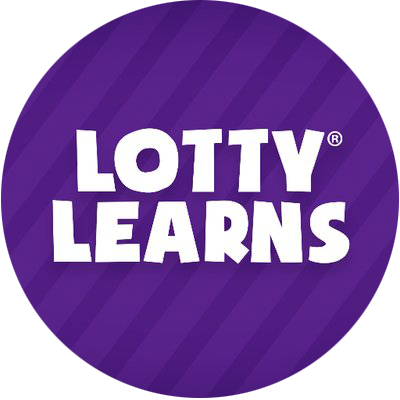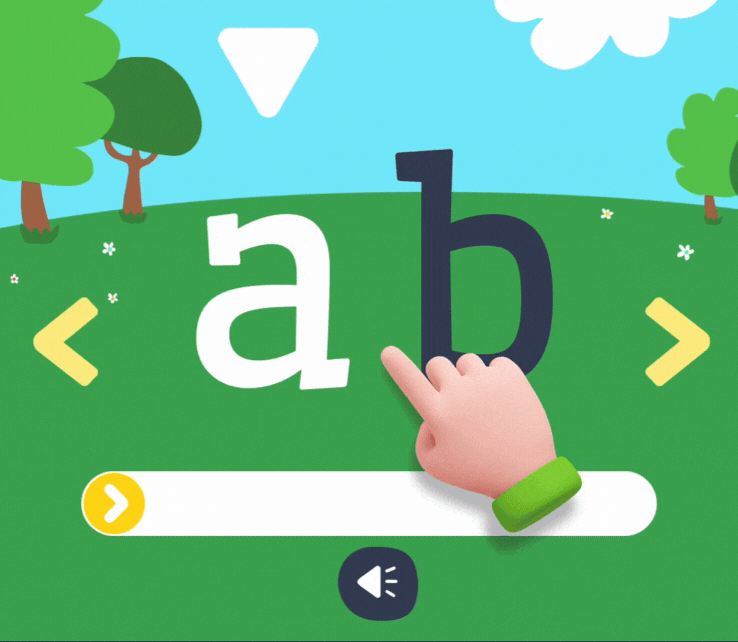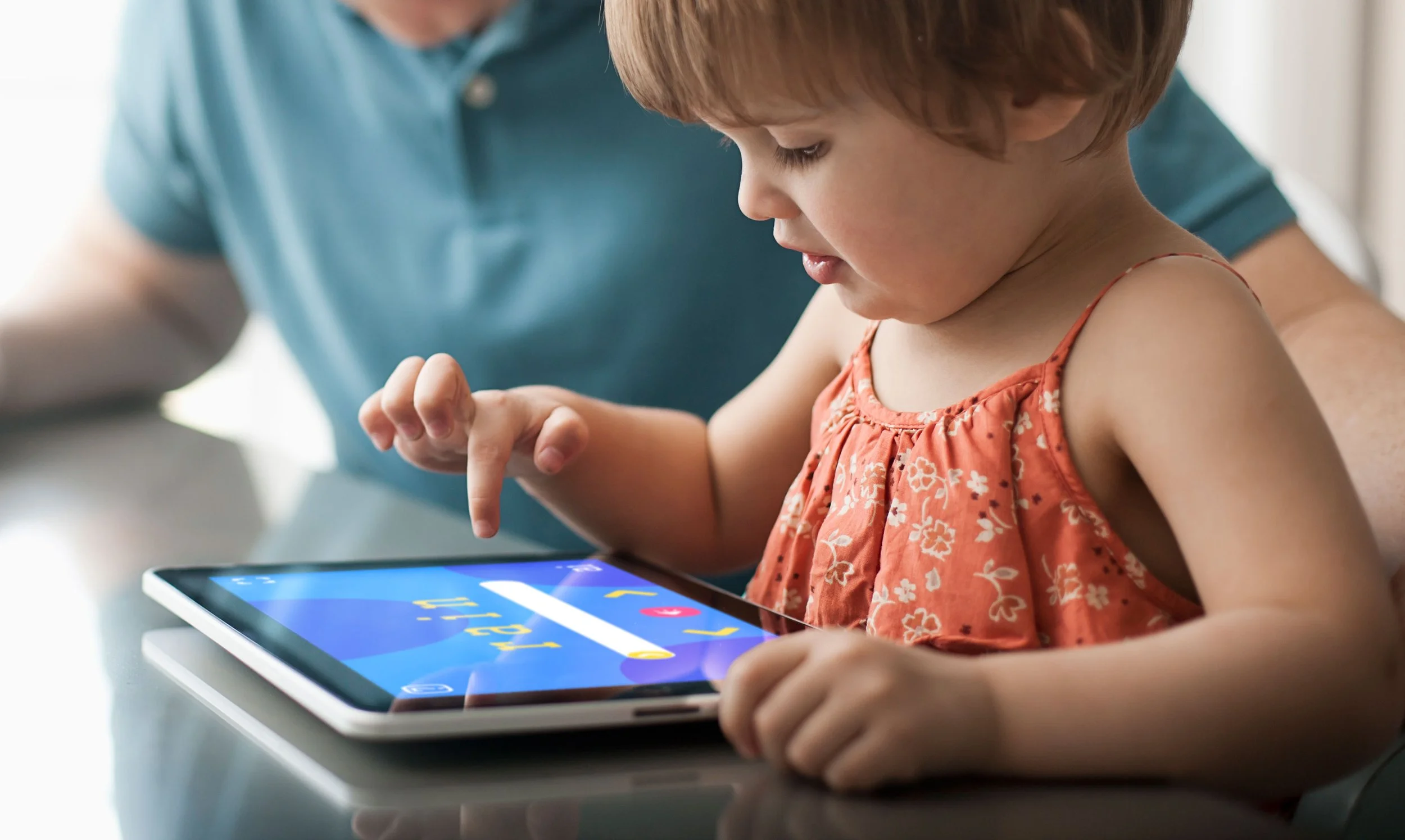Why Most Reading Apps Fall Short and What Real Interactive Phonics Practice Looks Like
Real reading starts with real word practice. Shown here: Lotty Learns’ interactive Phonics Trainer in action.
Parents are asking for real reading solutions for their children.
For too long, kids have been handed "learning apps" and games that focus more on keeping them entertained than actually teaching them how to read. Fast-paced animations, constant rewards, and endless tapping may look like progress—but they often lead to overstimulation and shallow engagement. These features might keep kids busy, but they rarely build the core skills children need.
The results speak for themselves.
Literacy rates in America continue to decline. More children are entering school without the foundational skills to sound out words, recognize patterns, or connect letters to sounds. And parents are left wondering why all that screen time didn’t lead to real results. After trying app after app with little to show for it, many parents start to ask a familiar question—how do I teach my child to read?
It's time to return to what works.
Somewhere along the way, we overcomplicated how kids learn to read. Instead of focusing on real interaction with words, we handed them learning apps and games and hoped for the best. But reading isn’t something that just happens on autopilot. Kids need to slow down, sound things out, and get support when they’re stuck.
At the same time, children are more overstimulated than ever. Jumping from app to app, bombarded with sounds, animations, and constant feedback and in-game ads. It becomes harder for their brains to focus, and even harder to retain what they’ve learned. What looks engaging on the surface may actually be getting in the way of real learning.
That’s where parents come in. We want them to be as involved as possible, because guidance and encouragement make a huge difference, especially in the early stages of reading. But even with their best efforts, many still face the same struggles: kids guessing words instead of decoding them, forgetting sight words after repeated exposure, or reading isolated words but freezing when asked to read a sentence. These are deep, common issues—ones that most apps don't solve.
The Phonics Trainer guides kids through each sound in a word using click-to-hear letters and a visual slider to help with blending.
How Lotty Learns Solves the Real Problems
Lotty Learns was built to solve the real problems parents kept facing—problems that most learning apps ignored. It's designed to help kids build real reading skills through meaningful interaction with words. We’ve removed everything that distracts a child from the goal of reading. What’s left is what matters most. Focused practice with real words, designed for real learning. No overstimulation. No progress maps. No gimmicks. Just practice.
At Lotty Learns, every tool is built around a simple idea—real reading comes from real practice. The Phonics Trainer tool suite allows kids to break down words one sound at a time, click each letter to hear its sound, and use a visual slider to blend the sounds together. This directly addresses phonemic awareness, blending difficulty, and letter sound confusion.
Our Sight Word tools help with retention by offering consistent, uncluttered exposure to high-frequency words—perfect for teaching sight words at home without distraction. The Sentence Workshop focuses on reading in context, helping kids transfer their word recognition into fluent sentence reading. It also minimizes over-reliance on guessing by letting them click words only when needed.
Even our digraph and silent e tools are designed to help children hear and practice tricky sound combinations—like “sh,” “th,” vowel pairs such as “oa” or “ee,” and the difference between long and short vowels. Every part of the program is made to build clarity, reduce overwhelm, and help children make lasting connections with language. These tools provide real reading help for kids—and they do it without causing unnecessary frustration or overload. That’s what actually helps them learn to read. And when kids get this kind of focused practice, progress often happens faster than parents expect.
Even young children can begin exploring letter sounds within real words—calmly, clearly, and without distraction.
Early Exposure Matters
Starting early makes a difference. Letter sounds don’t always have to be taught on their own—kids can begin learning them by hearing those sounds inside real words. With the Phonics Trainer, even preschoolers can tap on letters to hear each sound while seeing how those letters come together to form a word. This helps them understand how letters work together, sometimes even before they memorize letter names. It’s similar to how some families teach the alphabet using letter sounds instead of names. By giving children this kind of meaningful exposure early on, they start making real connections between sounds and words. This early experience helps them move from recognizing individual letters to understanding how those letters function together. It’s one of the best ways to teach phonics at home— By starting with real words that carry meaning and structure.
Even when parents can’t be fully hands-on, Lotty Learns makes it easy to stay involved and support real reading practice at home.
Supporting Parents Without Replacing Them
While we believe that parents play an essential role in supporting early reading, we also understand that it's not always realistic to be fully hands-on. That’s why our tools are designed to be flexible. A child can sit and try to read a word on their own. If they get stuck, they can tap a letter to hear the sound, use the slider to visualize blending, and check if they read the word correctly. It’s the best of both worlds: real guided practice, even when a parent can’t be right there. And when parents are available, our tools give them a simple, effective way to guide reading and expose their child to a wide range of words, without needing to create materials or plan lessons from scratch.
A child explores digraphs using the Phonics Trainer tool, tapping through each sound to build the word.
This is what real reading practice looks like
It often doesn’t look flashy, but when a child is given the right kind of space and support, something real starts to take shape.
A calm space. A child focused on the word in front of them. And an interactive tool that supports them every step of the way.
It’s the kind of practice that builds confidence with every session. That helps children sound out a word today, and recognize it tomorrow. That turns effort into progress, and frustration into momentum.
This is where reading starts to feel possible. And for many families, it’s where it finally starts to work.
That’s the difference between entertainment and education. That’s the difference real phonics practice can make.
Ready to give your child the kind of reading support that really works?
Start your free 7-day trial today at LottyLearns.com and experience phonics practice that works.





